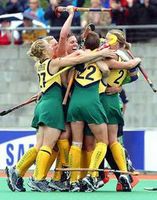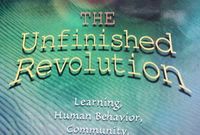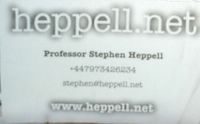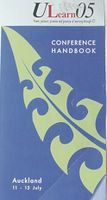
Most comprehensive change since 1998?

The most comprehensive development since the advent of Tomorrows Schools said the Ministry ‘spin’ as they presented their schooling strategy for the next five years.
I couldn’t wait to read it!
Well I must say I was disappointed. It is hardly a document with the potential to revolutionize our antiquated post primary school system. In fact the system escaped any need to be transformed. Everything it seems it depends on effective teaching, involving parents and the magic buzz words of ‘evidence based teaching.’
Nothing wrong with any of the above but the first two are hardy new, although the 'rediscovering' of the importance of them is welcomed. The third – well, I have my doubts. ‘Evidence based learning’ seems to reflect a limited perspective about learning and a lack of understanding of the importance of creativity and imagination.
‘Evidence based learning’ get endless mentions. Researchers, with time to think in their ‘ivory towers’, somehow believe that teachers have the time to do something , gather evidence and then modify their teaching. This of course will need to fitted in with current demands to plan ‘learning outcomes’ and record assessment details.
If only it were so easy. Where is the time (and energy) to do this to come from? Creative teachers make countless teaching decisions on the run drawing on their wealth of professional expertise. Sometimes this is all the ‘evidence’ such teachers need. They work on the premise of, try something, and if it works keep it, if not, do something different ‘next time’. Be nice if they always had time to negotiate goals and to write them down and to record ‘evidence’!
The idea that students learn best when they work in concert with teachers and their parents is hardly new. Michel Fullan calls it the ‘power of three’. Dewey wrote about last century. The report asks for great sharing of ideas between teachers and schools – ironically these are qualities that have ‘bred out’ of schools as a result of faulty past ministry ideology.
The strategy admits to the fact that far too many students, particularly Maori and Pacifica students, are underachieving; and that there is a real problem of lack of engagement in the early secondary years in particular. More effective teaching and greater parent support will obviously help remedy this but it will not be enough.
The strategy would be more dramatic if it had faced up to the fact that the industrial ‘efficiency’ structures of secondary school, and the isolated subject centred mindsets of the teachers within them, are the real problem. There is little recognition by the writers that, in the ‘wired’ 21stC, ‘the curriculum has left the building’!
There have just been too many structures and demands imposed on schools for teachers to have achieved what is now seen as the core purpose of education: to develop ‘ motivated and self directed learners’. It is pleasing to read words like ‘students need their identity and culture valued’ but to ensure this requires we move into ‘personalized learning’ with every learner negotiating, with their teachers and parents their own ‘individualized learning plan’. Constructivist philosophy underpins the strategy (helping students make sense of their own experiences) and this is welcomed, but it is in conflict with a transmission model which is still firmly in place in many schools. The strategy does not directly face up to the need to ‘re-culture’ as well as ‘restructure’ traditional secondary schools. At least ‘schools as learning communities’ gets a brief mention , a need for ‘ coherent school wide teaching approaches’ and a ‘school wide culture’ – so I guess this is a start? But schools are, as yet, not ‘learning communities’ where all students leave with a desire to continue learning intact.
At least the ‘technocratic’ curriculums imposed on schools in the 90s are away being clarified to decide ‘what is worthwhile to learn’ and ‘new’ Key Competencies are being developed. Back to the future! And at last the system, or lack of one, is facing up to the problem of transitions between schools which, for many students, must be akin to ‘visiting a foreign country’.
There is a lot of talk about everyone working collaboratively which is great except it was the Ministry that created a ‘non risk non sharing’ environment with its earlier ‘stand alone’ competitive school management model. Lack of coherence and comes from the top but at least the strategy will encourage greater collaboration – a bit like ‘putting humpty back together again!’ Board of Trustees are now being asked to be involved in setting the visions for ‘their’ schools; the original premise of Tomorrows Schools before the ‘experts’ imposed their endless compliance requirements onto schools.
If the core priority is now for ‘all students experience success’ we will need some braver thinking. It will need more than ‘effective teaching’, ‘support’, ‘higher expectations’, and the valuing of ‘relationships’, as important as these are. For creative teachers little in the strategy is new – it is a reinvention of progressive humanistic education as expressed years ago by people like John Dewey. For creative teachers teaching is an imaginative art form developed in action and considered in refection and not an ‘evidence based’ science.
There should have been less ‘drawing on best practice research’ and more listening to the ‘voices of creative teachers’. To revitalize the teaching profession researchers need to play a supporting role and the mantle of expertise needs to be placed where all good ideas have always come from - creative teachers.
Teachers and parents seem to have lot to learn according to the strategy but the school system escapes a direct need to transform itself. Yet the ‘evidence’ is that it is the way the schools are structured that is the real problem. Henry Ford rules supreme!
The document is, I guess, a strategy not a vision for the future.
And I am already sick of the phrase ‘evidence based teaching’!
Useful yes! Inspiring – no!
PS Read Noeline Alcorn's article in the latst NZCER SET.








